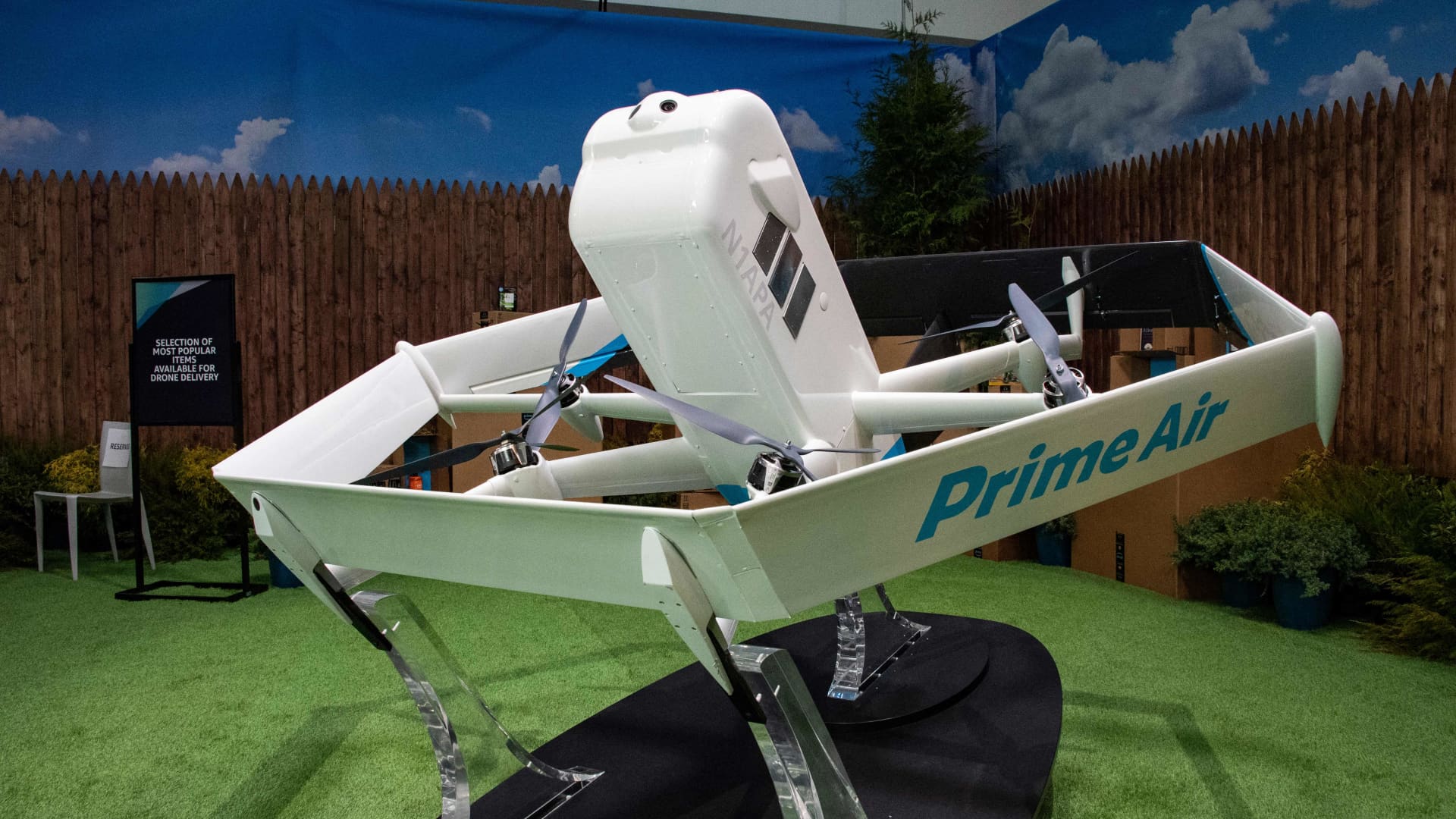Amazon has lost a high-profile executive in its drone delivery unit who was the company’s primary liaison with federal regulators, CNBC has learned.
Sean Cassidy, Prime Air’s director of safety, flight operations and regulatory affairs, announced his departure from the company last week in an internal note to employees, a copy of which was viewed by CNBC. Amazon hired Cassidy, a former Alaska Airlines pilot and vice president of the world’s largest pilots union, in 2015 to oversee strategic partnerships in the drone program.
“This is my last day at Prime Air and at Amazon, so a quick note to pass along my profound thanks to so many of my friends and colleagues here who have made this nearly nine year journey such an amazing experience,” Cassidy wrote in the memo.
Cassidy oversaw much of Amazon’s relations with the Federal Aviation Administration as it sought to get the ambitious drone delivery program, a pet project of Amazon founder Jeff Bezos, off the ground. Bezos predicted a decade ago that a fleet of Amazon drones would take to the skies in about five years, dropping packages on customers’ doorsteps in 30 minutes or less. That vision hasn’t materialized as quickly as Bezos hoped.
Amazon did not immediately respond to a request for comment about Cassidy’s departure.
In August 2020, Amazon received Part 135 certification from the FAA, allowing it to use drones to deliver packages, but with some restrictions. Last year, Amazon announced it would begin testing drone deliveries in two small markets in California and Texas.
But just as the program appeared to be set to expand, Prime Air in January was by layoffs as part of broader job cuts at Amazon. It has also been beset with regulatory setbacks, and has struggled to meet delivery goals. In August, the unit lost two executives key to its operations, CNBC previously reported.
David Carbon, Amazon’s drone delivery head and a former Boeing executive, previously set an internal target to make 10,000 deliveries in 2023 between its two test sites.
Amazon said in October that its drones have “safely delivered hundreds of household items” in College Station, Texas, since December 2022, and it’s beginning medication delivery by drone in the area. The announcement didn’t say how many deliveries have been made in Lockeford, California, the company’s other test site.
In late October, Amazon cleared a significant regulatory when the FAA amended restrictions that dictated where and how its drones could fly. Cassidy wrote to the FAA in July asking that the agency allow Amazon to fly drones out of sight of a “visual observer,” or an employee who keeps an eye on the drone while it’s in flight to make sure it avoids hazards, according to government filings. Cassidy said Prime Air had spent years developing a “detect-and-avoid” system for its MK27-2 drone, which allows the vehicle to steer clear of aircraft, people, and pets, as well as static objects like chimneys, eliminating the need for visual observers.
On Oct. 23, the FAA granted Amazon’s request, and loosened restrictions on where its drones can operate, permitting it to fly over roadways and cars when necessary to complete a route. Some restrictions remain intact, such as rules prohibiting drones from flying over open-air assemblies of people, and schools during times of operation.
It hasn’t been entirely smooth sailing entirely since then. The National Transportation Safety Board is investigating a Nov. 10 crash at Amazon’s drone test site in Pendleton, Oregon, according to a federal crash report viewed by CNBC. The drone sustained “substantial” damage during the incident, but no one was injured, and there were no fires or explosions at the site.
The NTSB said it’s conducting a class 4 investigation into the incident, which it considers to be more limited in scope vs. other probes.
It comes after a separate incident at the Pendleton site in June, where a drone made an emergency landing in a field and was destroyed. Amazon said at the time it tests its drone systems “up to their limits and beyond,” and that it reported the incident to regulators.
WATCH: Amazon drones lagging far behind Alphabet’s Wing and Walmart partner Zipline
